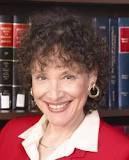Truthout Original
Monday 15 June 2009
From 1961 to 1971, the US military sprayed Vietnam with Agent Orange, which contained large quantities of Dioxin, in order to defoliate the trees for military objectives. Dioxin is one of the most dangerous chemicals known to man. It has been recognized by the World Health Organization as a carcinogen (causes cancer) and by the American Academy of Medicine as a teratogen (causes birth defects).
Between 2.5 and 4.8 million people were exposed to Agent Orange. The spraying covered 1.4 billion hectares of land and forest - approximately 12 percent of the land area of Vietnam.
Vietnamese who were exposed to the chemical have suffered from cancer, liver damage, pulmonary and heart diseases, defects to reproductive capacity, and skin and nervous disorders. Children and grandchildren of those exposed have severe physical deformities, mental and physical disabilities, diseases and shortened life spans. The forests and jungles in large parts of southern Vietnam have been devastated and denuded. They may never grow back and if they do, it will take 50 to 200 years to regenerate. Animals that inhabited the forests and jungles have become extinct, disrupting the communities that depended on them. The rivers and underground water in some areas have also been contaminated. Erosion and desertification will change the environment, contributing to the warming of the planet and dislocation of crop and animal life.
The US government and the chemical companies knew that Agent Orange, when produced rapidly at high temperatures, would contain large quantities of Dioxin. Nevertheless, the chemical companies continued to produce it in this manner. The US government and the chemical companies also knew that the Bionetics Study, commissioned by the government in 1963, showed that even low levels of Dioxin produced significant deformities in unborn offspring of laboratory animals. But they suppressed that study and continued to spray Vietnam with Agent Orange. It wasn't until the study was leaked in 1969 that the spraying of Agent Orange was discontinued.
US soldiers who served in Vietnam have experienced similar illnesses. After they sued the chemical companies, including Dow and Monsanto, that manufactured and sold Agent Orange to the government, the case was settled out of court for $180 million which gave few plaintiffs more than a few thousand dollars each. Later the US veterans won a legislative victory for compensation for exposure to Agent Orange. They receive $1.52 billion per year in benefits.
But when the Vietnamese victims of Agent Orange sued the chemical companies in federal court, US District Judge Jack Weinstein dismissed the lawsuit, concluding that Agent Orange did not constitute a poison weapon prohibited by the Hague Convention of 1907. Weinstein had reportedly told the chemical companies when they settled the US veterans' suit that their liability was over and he was making good on his promise. His dismissal was affirmed by the Second Circuit Court of Appeals and the Supreme Court refused to hear the case. The chemical companies admitted in their filing in the Supreme Court that the harm alleged by the victims was foreseeable although not intended. How can something that is foreseeable be unintended?
On May 15 and 16 of this year, the International Peoples' Tribunal of Conscience in Support of the Vietnamese Victims of Agent Orange convened in Paris and heard testimony from 27 victims, witnesses and scientific experts. Seven people from three continents served as judges of the Tribunal, which was sponsored by the International Association of Democratic Lawyers (IADL).
   Testimony given by the witnesses showed the following:
Mai Giang Vu, a member of the Army of South Vietnam, carried barrels of the chemicals on his back. His two sons could not walk or function normally, their limbs gradually "curled up" and they could only crawl. They died at the ages of 23 and 25.
Pham The Minh, whose parents also served in the South Vietnamese Army, showed the Tribunal his severely deformed, crooked, skinny legs; he has great difficulty walking, as well as digestive and pulmonary diseases.
To Nga Tran is a French Vietnamese who worked as a journalist during the spraying. Her daughter weighed 6.6 pounds at the age of three months. Her skin began shredding and she could not bear to have skin contact or simple demonstrations of love. She died at 17 months, weighing 6.6 pounds. Ms. To described a woman who gave birth to a "ball" with no human form. Many children are born without brains; others make inhuman sounds. (Note: You can view every article as one long page if you sign up as an Advocate Member, or higher).
Rosemarie Hohn Mizo is the widow of George Mizo, who served in the US Army in Vietnam in 1967. He slept on contaminated ground and consumed food and drink that were also contaminated. George refused to serve after he was wounded for the third time; he was court-martialed and sentenced to 2-1/2 years in prison and a dishonorable discharge. George helped found the Friendship Village where Vietnamese victims live in a supportive environment. He died from conditions related to his exposure to Agent Orange.
Georges Doussin, co-founder of the Friendship Village, visited a dormitory where he saw 50 highly deformed "monsters," who produced inhuman sounds. One man whose parent had been exposed to Agent Orange had four toes on each foot. Doussin said Agent Orange creates "total anarchy in evolution."
Dr. Nguyen Thi Ngoc Phuong, from Tu Du Hospital in Ho Chi Minh City (Saigon), sees many children born without arms and/or legs, without heads or faces, and without a brain chamber. According to the World Health Organization, only 1-4 parts per trillion (PPT) of Dioxin in breast milk can cause severe deformities in fetuses and even death. But up to 1,450 PPT are found in maternal milk in Vietnam.
Dr. Jeanne Stellman, who wrote the seminal article about Agent Orange in the magazine Nature, testified that "this is the largest unstudied environmental disaster in the world (except for natural disasters)."





